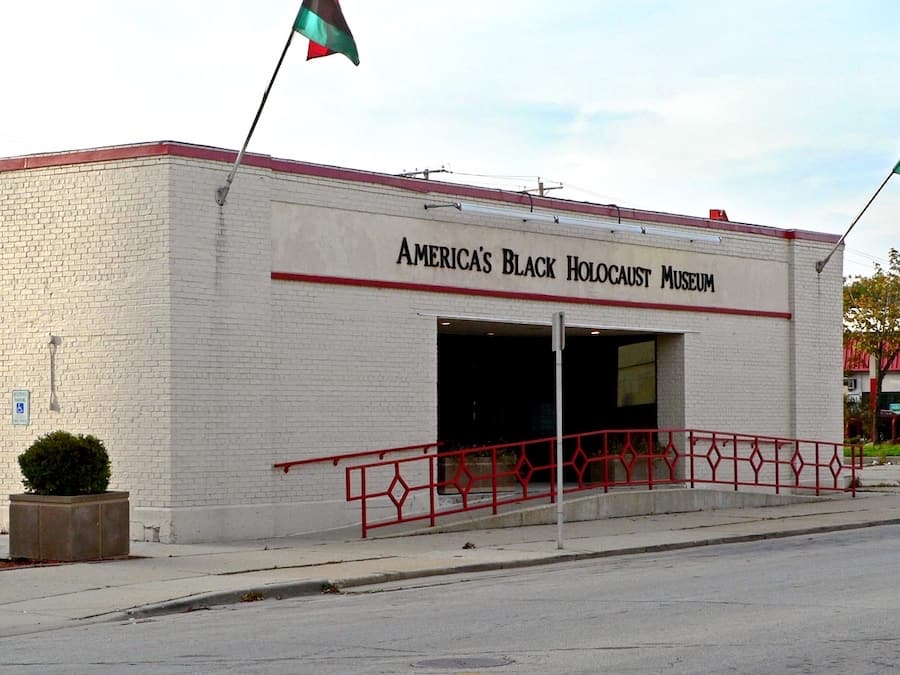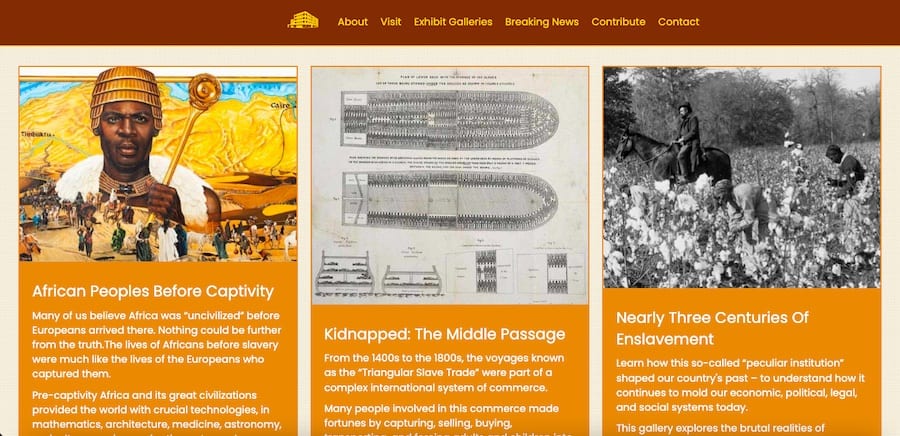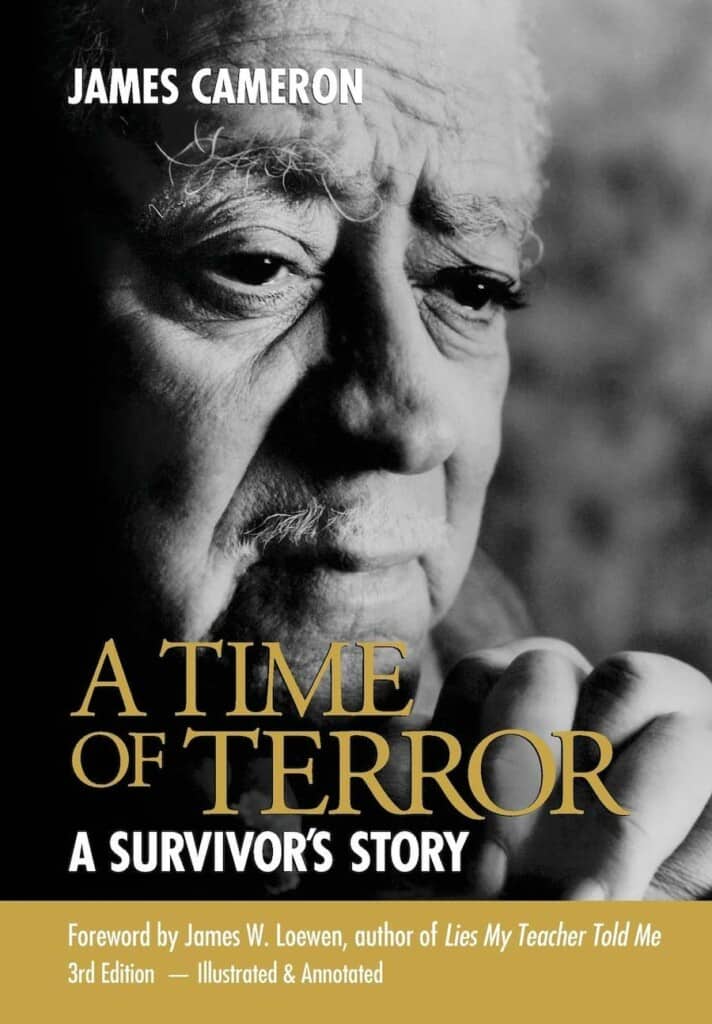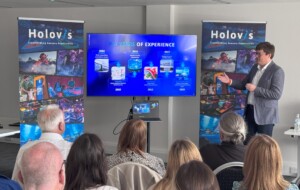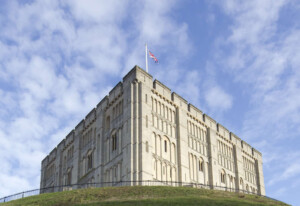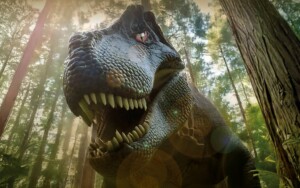On 25 February 2022, America’s Black Holocaust Museum (ABHM) in Milwaukee, Wisconsin, opened its doors to the public for the first time since 2008. The museum, which is both a historical and a memorial museum, was founded in 1988 by Dr James Cameron, one of the only known survivors of a lynching.
Following Dr Cameron’s passing in 2006, and then the Great Recession in 2008, the museum was forced to close temporarily. However, many wanted to continue his legacy and in 2012, the virtual America’s Black Holocaust Museum was created. Now, following over a decade of community efforts and fundraising campaigns, the museum once again occupies a physical space.
Dr Robert Davis, president and CEO of ABHM, spoke to blooloop about the museum’s history and its journey so far, the benefits of the virtual collection, and what visitors can expect from the brand new ABHM.
From zoos to museums
Davis initially qualified as a Doctor of Veterinary Medicine and began his career at the Smithsonian’s National Zoo. He has since held senior roles at several large zoos in the US, including Zoo Atlanta, Lincoln Park Zoo, and the Zoological Society of Milwaukee.
Over the course of his career, he has also served as a member and chairman of the Association of Zoos and Aquariums’ (AZA) Diversity Committee and a board member and vice-chair of the American Alliance of Museums (AAM). He is currently a board member of the Association of African American Museums (AAAM).
Speaking about the connection between his career in the zoo world and his current role at ABHM, Davis says:
“I realised early in my career that zoos and aquariums are museums; they are living collections. Yes, there are some differences. But the experiences should be the same, in terms of the content and context.
“I’ve been fortunate to be on two national boards around museums: the American Alliance of Museums and the Association of African American Museums. That has given me a much broader perspective and understanding of the roles that museums play in our culture. I also learned, about 10-15 years ago, that culture trumps strategy, and that our culture helps to mould who we are.
“The traditions, our family traditions, our heritage traditions, our cultural traditions helped make us who we are right now. And museums and cultural institutions really help in that area.”
Museums add to the classroom experience
For Davis, museums can be an excellent adjunct to the classroom experience:
“So, for example, we had several programmes when I was at Zoo Atlanta, and at the National Zoo, where we had rainforest animals and we helped co-create programmes with teachers. These teachers were teaching about rainforest animals as part of their curriculum, so students could learn about them at school but then they could come to the zoo and see them, to have an additional curriculum and informal science education perspective.”
“That completed their experience. We calculated, based on the research, that they had anywhere from 17 percent to almost 30 percent better understanding of rainforest animals because they had this classroom experience and then they went on to see them and learn about them even more at the zoo.
“So that’s why I am in this business. And as to what attracted me to return to Milwaukee [Davis was president and CEO of the Zoological Society of Milwaukee from 2005 to 2015], this was down to Dr Cameron.”
Dr James Cameron and ABHM
Dr James Cameron survived a lynching when he was 16, in which two of his companions died. Following this, he spent his life studying the African American experience in the United States. He founded ABHM in 1988 with the help of philanthropist Daniel Bader, after a visit to Israel with his wife.
“I learned that America’s Black Holocaust Museum had got to a place where they financially felt that they could hire a CEO and reopen,” says Davis. “And I learned about Dr Cameron’s life, and how the trajectory of his life was changed because at 16 years old, he was nearly lynched.
“I regret the fact that I was here for 11 years and never really got a chance to get to know Dr Cameron. He was a genius, a self-taught historian, and a plethora of knowledge. Everybody who had met him and spent any time with him would say the same thing.
“Many people have told stories of how the museum would be closed but they would see a light on, and they would knock on the door, and Dr Cameron would just welcome them in and talk to them for hours.”
America’s Black Holocaust Museum is a unique museum
Dr Cameron was a prolific writer and many of his articles are in the Special Collections of the Milwaukee Public Library. He started collecting artefacts, but his home was too small to house them. He knew he wanted to create something like a museum, to host this collection.
“Then, he was influenced heavily when he and his wife took a pilgrimage to Jerusalem and visited the Jewish Holocaust Museum. He said, ‘We’ve got to do this in the United States for African Americans.’”
He returned from his trip and started preparing:
“The original property was owned by the city. It was an old boxing gym, and he was able to lease it from the city for something like $1 a year. That’s where he opened the museum in 1988 and now, our entrance doors are about 25 to 30 feet north of where the original door was. So, we are still on the footprint of the original Museum.”
“There were several individuals through the years, in the beginning, that wanted him to change the name of the museum. He refused to do that. Some individuals wanted to pay him to do that. Or, to pay him to move the museum to Washington D.C. But he was adamant about wanting to be here in Milwaukee or somewhere in the Midwest.”
Dr Cameron passed in 2006. This event was followed by the passing of one of the museum’s biggest benefactors, and then the 2008 recession. This, combined with the fact that Dr Cameron himself was such an integral part of ABHM, meant that the museum ended up closing its doors in 2008.
ABHM: the virtual years
However, ABHM still had a presence and was run as a virtual museum from 2012 to the present day.
“This is contrary to what normally happens,” says Davis. “Normally a museum has been open for many years and then they get into the virtual space afterwards. Our museum had been open for about 20 years and then it had to close. A few years later it went 100% virtual.”
“Dr Fran Kaplan, Reggie Jackson and Brad Pruitt developed and created the virtual museum and it’s really an academic website. It’s literally like a virtual classroom. It has over 3300 pages of information, visited by over 200 countries. We have nearly 2 million people visit a year.
“People from around the globe have created curriculums around the virtual museum. What we’re now are doing is hiring staff in our education department that will serve as a bridge, to cross-pollinate. We want to make sure that in the physical museum we lead people to the virtual space, and have the virtual space lead people to the physical space.”
Bringing America’s Black Holocaust Museum back
After almost a decade online, America’s Black Holocaust Museum opened to the public in a physical location once more in 2022, thanks to a grassroots, community campaign.
“Originally, it was a grassroots campaign,” says Davis. “There were people who wanted to see the museum reopen and so they were making smaller donations.”
“One of the major catalysts was that there were some foundations here who supported Dr Cameron previously and were looking to support ABHM again, with the proper leadership. That was the Bader Foundation here in Milwaukee and the Greater Milwaukee Foundation. They were there in the very beginning when there were rumblings that we were going to be able to reopen the museum.”
Finding the funds
“Then, the county executive here at the time, Chris Abele, who runs the Argosy Foundation, created a challenge grant,” continues Davis. “This was important because a lot of funders will say, for instance, ‘This is a zoo. Do you have 100% board participation? Do you have a lot of conservation organisations supporting you?’
“It’s the same thing for African American cultural institutions. They will ask, ‘Do you have 100% board participation in terms of donations? What are the black people there doing? Are they supporting you?’
“And so, Chris, who was not African American, created a challenge grant of $100,000. The Board Chair at the time, Ralph Hollmon, created what we called a legacy circle, which comprises 10 African American families who all pledged $10,000 each to match the challenge grant. But because we then made the challenge grant public, the museum was actually able to raise almost $480,000 against that $100,000 challenge.”
With the cutting of last Friday’s ribbon by Brad Pruitt, Melissa Allen, Virgil Cameron, CEO Dr. Robert Davis, and Board Chair Ralph Hollmon; America’s Black Holocaust Museum opened to the public. We are open Tue – Sat 10 AM – 5 PM; Sun 12 PM – 5 PM. We look forward to seeing you! pic.twitter.com/0Q2E3gyNZL
— ABHM (@ABHMuseum) March 1, 2022
“That’s what created the trajectory of people starting to give, of them bring me on as the CEO, of us hiring a few staff. That was the catalyst, that $100,000 challenge grant.”
An anonymous donor also gave a million dollars to the project in 2019. This was followed by a $10 million gift from another anonymous donor in 2021.
“This is pretty significant for any museum, especially an African American museum. We’re not going to rest on our laurels. We want this to serve as a catalyst because we’re going to expand the museum. We’ve already purchased a building across the street, so we will be creating and developing an addition to the museum.”
Inside the new America’s Black Holocaust Museum
In terms of what visitors can expect when they set foot in ABHM Davis says:
“This first iteration of the museum is pretty small in comparison to what we’re expecting to do in the future. It’s less than 5000 square feet of exhibit space.
“When you first walk in, we want to orient the visitor into an understanding of how we all evolved. So, we talked about the Cradle of Life, the continent of Africa, where everybody has evolved from. Then we start giving some historical facts about how the continent of Africa contributed to the economy of the globe.
“Following this, we talk about some significant events that happened on all continents during the periods from the 1400s to the 1800s. Then we talk about the transatlantic slave trade, we also have a replica of a slave ship.
“That’s where the museum gets a little emotional. Because from that, then we talk about slavery. We talk about the brutality of slavery. We talk about emancipators like Harriet Tubman, and we also tie in some local stories. There’s a very famous story about a slave who ran away from his slave master in Missouri and landed in Wisconsin. He was jailed because of the Fugitive Slave Act of that time.
“Wisconsin, although we are fairly conservative now, back then was extraordinarily liberal. So, there was a group of white abolitionists that said, ‘No, we’re going to break him out of jail and help him escape.’ He went to several locations throughout Wisconsin, before eventually escaping to Canada.
“We also get into the economics of slavery. That’s the reason that West Africans were enslaved. We then start to talk about Jim Crow.”
Highlighting important issues
All of these experiences tie into the mission of America’s Black Holocaust Museum, which is to highlight the systemic disparities caused by colonialism, slavery, and segregation.
“These are still manifest today in the United States in 2022. So, we look at the concept of racism. Racism is a series of systems that have been continued since those times that we’re talking about. If you have a politician who says America is not a racist, in their minds, they may think that’s true. That’s because they have benefited systemically from all the things that have given them advantages in their lives.”
“Then we talk about important Milwaukeeans. The first part of the experience is emotional, it can be gut-wrenching. The last 50% of the museum talks about the importance of the African American church, the importance of food and culture, as well as looking at significant Milwaukeeans and Wisconsinites.
“We also talk a little bit about Black Lives Matter. Plus, there is one exhibit that talks about something highly relevant to Milwaukee. There’s a zipcode here 53206, which is the most incarcerated zip code in the entire country.
“But then we end the experience on a very good note in terms of all successful African Americans in these various industries. And then we’re going to highlight some local African American art as well.”
Grand plans for the future of ABHM
Several special events took place to mark the reopening of America’s Black Holocaust Museum. This included a panel discussion on some issues around race led by the museum’s historian Dr Robert Smith, and a special VIP reception. The museum also teamed up with Milwaukee Film and its Black Lens programme, co-sponsoring a movie called Sankofa.
“The plan is to start very small,” says Davis on the museum’s first year. “We are in the process of training our griots, which is what we call our docents or interpreters. We will have griot-lead tours that people can sign up for.
“Once we have a department of education in place, we’ll look at the programming on-site. Then we will then start to create school programming as well, and we’ll then do outreach programming.”
America’s Black Holocaust Museum & a national conversation
Talking about his goals for the first year, Davis says:
“First and foremost, we want people to visit. We have one room, the second reflection room, where you can videotape yourself and talk about your experience. It’s something that is becoming commonplace in museums now. That’s because people want to share their experiences. They want to share their emotions about what they just saw and read or heard or participated in.
“We’re going to take those to heart. As we are developing exhibits for the new space that we’ve just acquired, we will listen to our public and listen to what they say and their experiences and what they did or didn’t.
We want to continue the importance of the legacy. We want to continue Dr Cameron’s vision and his dream for us to have these difficult conversations respectfully.
“So, we want people to come and enjoy the museum. We also want people to then link to the virtual museum, and perhaps to become a member or a donor.
“Dr Cameron didn’t call it the Bronzeville Holocaust Museum. We are America’s Black Holocaust Museum. We’ve been fortunate that we’ve had national and international exposure. And we want to continue the importance of the legacy. We want to continue Dr Cameron’s vision and his dream for us to have these difficult conversations respectfully.”
ABHM, BLM and the importance of education
These conversations are, unfortunately, still relevant:
“Because of Breonna Taylor and George Floyd, and so many more, attention has been drawn to what is a serious problem in the United States, with unarmed African Americans being killed. It’s also brought a lot of attention to our museum,” says Davis.
“In response, we created virtual programmes and virtual book clubs. These have, primarily, been filled by white people, typically between the ages of 45 and 70. When we have asked these people why they are enrolling in these programmes, they have said ‘We want to know. We didn’t understand what was going on.’
“There’s a saying: you never let a crisis go to waste. So, we’re using this as a tool for educating people about these things that are embedded in our culture. Because we need to expose these issues and talk about them, in order to figure out a solution.”




